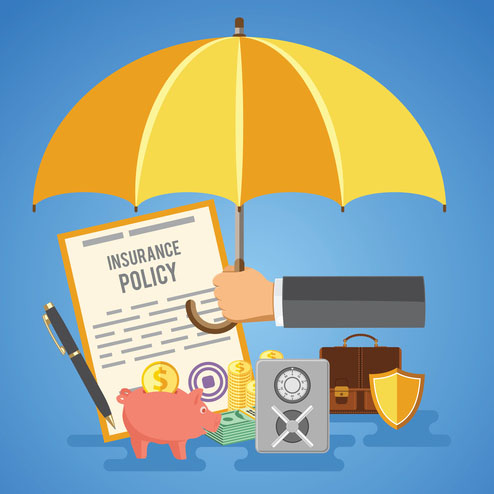As a business owner, it’s important to protect your livelihood from potential threats – both big and small. To do this, you need to understand the basics of property insurance.
Some examples of types of property that you may need to insure are: leased or owned buildings and structures; furniture, equipment and supplies; inventory; money and securities; records of accounts receivable; leasehold improvements and betterments you made to the rented premise; machinery/boiler; electronic data processing equipment (computers, etc.); valued documents, books and papers; mobile property (construction equipment, etc.); property in transit; cargo; satellite dishes; signs, fences and other outdoor property not directly attached to the building; intangible property (goodwill, trademarks, etc.); business contingency for suppliers; ordinary payroll; and extra expenses as a result of loss.
Under a basic property insurance policy, losses due to fire or lightning are covered, and includes the cost of removing property to protect it from further damage. If you want something beyond basic insurance, you can buy a standard policy that provides coverage for extended perils; these include events such as floods, windstorms, hail, earthquakes, acts of terrorism, explosions, riots, smoke, civil commotions and vehicles that damage your property. It also includes coverage for vandalism and malicious mischief.
When purchasing property insurance, it’s imperative to make sure that you purchase enough coverage to be adequately protected. A typical policy will provide both replacement cost value for your building and the actual cash value for your business property.
Most property insurance policies include a coinsurance clause, which requires the policyholder to share the cost of covered services up to a moderate percentage of the actual cash value of the property. This allows you to receive full coverage for your losses. If you decide to purchase inadequate coverage for your property, you may be obligated to pay a full percentage of all losses, even if they are listed in the policy.
Market Value and Replacement Cost
If you are a commercial property owner, it’s crucial that you choose a property insurance policy that fits your specific needs. You can cover your commercial proprieties in a variety of ways. Below are descriptions of common types of policies and valuation, and the costs that they generally cover.
Market Value
Market value, also called open market value, fair market value or fair value, describes the estimated amount that a property would sell for on the date of valuation. Any land in the property is also considered part of its market value.
Several factors go into play when deciding a property’s market value, including the location of the property, capitalization rates, rent growth rate and the general state of the real estate market.
Even though market value is usually determined when buying or selling a property, it may also be examined when determining the type of insurance policy to place on a property, or the amount of compensation in the case of a loss.
Replacement Cost
Replacement or reconstruction cost is a type of insurance that covers the cost to replace or repair a building with materials of the same or comparable quality. Replacement cost policies do not include the value of any land, and are determined by the amount needed to hire contractors and purchase materials to repair a building.
Although a replacement cost policy offers a lot of financial protection in case of loss, it also tends to be more expensive than other types of coverage. This means it may not make sense for every property.
Without continuous care, a property’s value will usually depreciate over time. It may be better to opt for a less expensive plan that still protects the operations of your business.
Actual Cash Value
Actual cash value policy is like replacement cost in that it covers the cost to replace or repair a property. However, with actual cash policy, there is a deduction in compensation to account for the depreciated value of the original property. A property covered under an actual cash policy will be rebuilt or repaired using modern construction techniques and materials.
Actual cash value policies generally have lower premiums than replacement cost plans, which means they may make more sense for certain types of properties. For example, a store located in an old building in an urban environment will not lose its value as quickly as a new office building in a business park. An actual cash value policy and its lower premiums may make more sense financially than a replacement cost plan.
Functional Replacement Cost
This type of policy is used when a building can be found that can replace the original property for less than the cost of building a new one. Functional replacement cost coverage can also be used to repair a partially damaged property with less expensive materials.
If you have a property that has expensive materials that aren’t necessary to the function of the property, then functional replacement cost coverage could be a good option. It’s also a good option for buildings with intangible value that is not relevant to their commercial function.

This information is provided courtesy of NFA partner – BB&T Insurance Services. Protect your business by contacting them today at servicenow@bbt.com or 888-399-2040.

